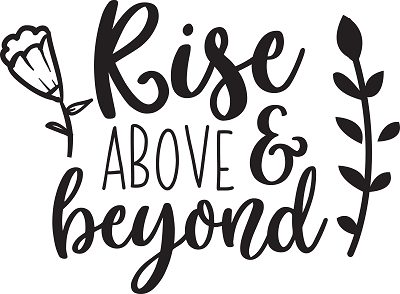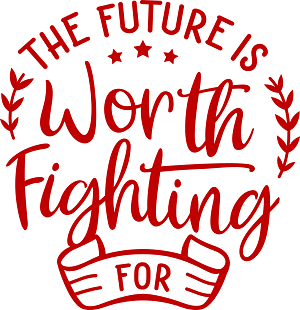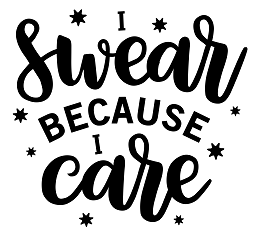 We all want to live happy and fulfilling lives. The trouble is that happiness and fulfillment mean different things to different people. They can also mean different things to us at different phases of our lives. For example, when we are children, we love to play games all day.
We all want to live happy and fulfilling lives. The trouble is that happiness and fulfillment mean different things to different people. They can also mean different things to us at different phases of our lives. For example, when we are children, we love to play games all day.
However, this is not a recipe for happiness as adults, because we have to earn enough money to pay our bills and afford all of the necessities of life.
But that is not to say that we should not have any fun, or put up with a miserable job just for the sake of a paycheck, or become a crazed workaholic who is stressed all the time because we are told in society that we are supposed to “have it all.”
It comes down to a question of work-life balance, and also an honest, holistic look at where you are in your life now, and whether it is really where you want to be in your personal and professional lives.
If you discover that your current life no longer seems to meet your needs, it might be time to start looking for a new direction.
Let’s look first at signs it might be time for a profound change of direction in your life.
How to Tell that It’s Time for a Change in Your Life
Do you jump out of bed every morning excited at the thought of a new day? Or do you keep hitting the snooze alarm and have to drag yourself out of bed and go through the motions?
Are you full of energy and vitality, or do you constantly suffer from aches and pains, and feel tired and stressed all the time?
If you’re constantly feeling “a day late and a dollar short” no matter how hard you try, it might be time to consider finding a new direction in your life.
You don’t have to feel stuck. It’s easy to get into a rut, doing the same things over and over again each day, because it’s comfortable and easy. It is like living on autopilot. You don’t have to think about the next steps or make any big decisions. Everything is pretty much mapped out for you.
The trouble is that this seldom allows for real personal growth and the chance to fulfill many of your most cherished dreams. People stay in a job they hate because they are too scared to apply for a promotion or change careers completely.
They stay at home and watch TV because they don’t have enough courage to take an evening class on a topic they would love to learn more about. They keep eating the same unhealthy foods because it is easier than learning how to cook, or because weight loss is so difficult for many people.
They might also stay in a relationship that isn’t fulfilling because it is familiar and less scary than putting yourself out there and starting to date again. For those of us who wonder how on earth anyone could stay in an abusive relationship, for example, sometimes it might be for the sake of the children.
At other times, it might be a psychological issue, in which the person tells themselves that it is really what they “deserve.”
Some people think that it might be too late for them to make significant changes in their lives. However, the truth is that it’s never too late – if you’re willing to take action.
If you’ve been thinking there’s more to life than what you have at the moment, then it’s time to start looking for a new direction in your life.
Your Purpose on the Planet
Defining your purpose on the planet, or POP, can make you “pop” when you undertake any tasks that are related to it. You can feel a great sense of joy and fulfillment in even small tasks when you know you are working on what you are really meant to be doing in this life, and expressing who you are through your actions and inactions.
Some people also call your POP a purpose-driven life. The Danes call it Hygge – happiness and fulfillment. The Japanese also have a word for it: Ikigai, which can be defined as self-worth.
No matter what you call it, your new direction in life should express who you are and what you wish to accomplish. It is based on self-respect and valuing your worth. It’s not about beating yourself up over what you can’t do. It’s about focusing on what you are good at and can do, or would like to learn more about in order to have a more fulfilling life.
So, how can you set off on your new direction and make positive changes in your life?
Your first step is to define what you want to change. The next step will be to identify barriers to making those changes.
Understanding Barriers to Change
Once you start to imagine a new direction in life, it can be very exciting and inspire you to take action right away. Sadly, many people don’t because they see barriers to change, rather than challenges that can be overcome. Some of these seeming barriers can be external, while others are often internal and self-imposed. The secret is spotting them and coming up with strategies to overcome them.
External Barriers
- Lack of knowledge or skill.
- Lack of money to get more education or training.
- Lack of time to undertake more education or training.
- A restrictive structure in the workplace that might hold you back from promotion or other opportunities.
- Lack of support in the workplace.
- Risk versus reward in relation to the change – you could get a promotion, but you would have to relocate.
- Lack of personal support – friends and family who are negative or just don’t “get it.”
- Saboteurs – people who might say they support your goals, but actually undermine you in subtle (or not so subtle) ways. Example: You want to go on a diet for your health. Your mother keeps baking cakes.
- Being labelled – you want to switch careers, but you are told you are “just a___” such as “just a teacher.”
- A lack of transferable skills for your new career, or starting your own business. Example: You’re an ace stockbroker who has made their fortune and wants to become a nurse, but biology and chemistry were not your best subjects at school.
Internal Obstacles
- Negative self-talk. Examples include:
“I can’t do this.”
“Who am I to try to do X?”
“I’m selfish for wanting to do X.”
“I’m too stupid to do X.” - Subconscious thoughts relating to self-esteem, self-worth and deserving to be happy can often sabotage you without you even realizing it.
- Past traumas / “failures” – You might consciously or unconsciously recall negative past experiences or setbacks and think that something similar will happen again. You might look back on failures, or feel a failure. However, it’s never an actual failure if you can learn from your mistakes and do better next time. It took Thomas Edison more than 700 attempts until he perfected the light bulb.
Deciding on a Plan of Action
Once you identify what you want, and any possible obstacles, you can develop an action plan to overcome them and go for your goals.
For example, there are more online educational opportunities than ever before, both formal and informal, so organizing a plan of study based on the essentials you need to know in order to become a nurse would be smart first steps – rather than running to the nearest nursing college to enroll.
Do some self-assessment tests and quizzes. These can be fun, and also highlight different aspects of your personality that you might not be aware of. The insights you gain can help you find the right direction for your life.
The Meyers-Briggs test is a good example, and one that is used increasingly by human resources personnel and hiring managers to help determine if you will be a good fit for a particular job.
Now that we’ve covered some potential obstacles to traveling in a new direction, let’s look at some steps you can take to start on a new path.
Steps to Finding a New Direction
There are a number of steps you can take that can help you change direction successfully.
Living Life with Passion and Joy
When seeking a new direction, think about what you love to do and feel passionate about. This can help you overcome the obstacles that you will face as you journey on your new path. Make happiness a priority as well. If you don’t love it, don’t do it.
Learn How to Set Boundaries and Say No
Stop being a people pleaser. Say no to anything that does not help you continue in the direction you have chosen now that you are living what could best be described as a purpose-driven life.
Set Goals and Follow Through
Setting goals is like setting your destination for a road trip. Most people would never dream of just getting into a car and driving with no map or GPS. They are also unlikely to decide to drive cross-country from New York to San Francisco without a map, GPS, and a plan for how long the journey will take, where they would stop to eat, and to sleep overnight, and so on.
Your life goals are far bigger than a simple trip to San Francisco, so you need to set “milestones” to ensure that when you take action, you can be sure you are on the right path. If there are detours, you can check to see you are not drifting too far from your own goals. And if you have to, you can also reset your goals so they are more in tune with your purpose-driven life.
Many people like to use the SMART goal system, where SMART stands for:
Specific
Measurable
Attainable
Relevant/Realistic
Timed
Examples of a career-related SMART goal would be:
“I would like to go back to college in September 2018 and get my Master’s degree in Public Health by 2020 so I can be eligible for promotion in my current workplace.”
Examples of a personal SMART goal would be:
“I would like to lose 50 pounds in order to return to a healthy weigh after having my baby. I would like to lose the weight by my next summer vacation, so I will look great in a swimsuit and have more energy for my husband and baby.”
Your Starting Point
When setting the goal, note down the start date and any important data that can help you measure your progress. For example, if today is October 1 and your summer vacation will be July 1, that gives you eight months to lose the weight, which is possible.
Setting Milestones
Milestones are like smaller steps that will all lead up to the big step of changing direction. Some goals will already have a milestone built in. For example, if you are undertaking a Master’s, there will be courses, exams, papers and perhaps even a dissertation. Mapping them out can help you track your progress.
In terms of weight loss, 50 pounds over eight months would be around six pounds lost per month, so your milestones might look like this:
October 1 – 200 pounds
November – aim for 194 pounds
December – 188 pounds
And so on.
Weigh yourself weekly and at the end of each month to stay on track.
Focus on Taking Action
What can you do right now, today, to help advance your goal? It could be to read an extra chapter of your textbook or watch an online webinar. It could be to put in an extra five minutes of cardio when you work out, or go for a walk at lunch instead of sitting at your desk.
Keep a To-Do List
This will keep you organized as you move forward. Keep one on the computer and one on paper. Review them each morning and evening and cross off or revise what you have accomplished during the day.
Keep a Calendar
Note down important dates and deadlines. Keep an online one and a paper one you can carry with you for ease of reference. Again, review it at the end of each day and the following morning to ensure you are prepared for class, meetings and so on.
Conduct Regular Progress Checks
Check your progress at the end of each month and every three months (that is, quarterly), as many businesses do. Check your progress and revise your goal as needed. The important thing is to not abandon it completely. If you get a bad grade, retake the course. Don’t drop out. Similarly, don’t think one slice of chocolate cake means all your efforts have been for nothing.
Surround Yourself with Supportive People
This will mean avoiding negative people who drain your energy, and finding new people, such as at college, who are on the same page as yourself with respect to goals.
Ignore Negative Self-Talk
Negative self-talk will keep you stuck where you have always been. Turn the talk into a positive if you can. A good example would be: “I am finding biology difficult, but I am also learning so much that if I just keep at it, I know I can master it in time for the exam.”
Visualize Success
Whenever you are feeling negative, or low-energy in relation to your goals, visualize your life once you start getting close to your goals. Picture acing your exams, graduation, earning more money, and so on. Imagine the gorgeous bathing suit you are going to buy in X size before your trip in July. A vision board with images of your best life can help inspire you.
Use Affirmations
Use affirmations, short sayings that help support your goals, to help keep up your energy. “I try my best every day” or “I am a magnet for success” are two good examples.
Free Yourself from Things That No Longer Serve You
Consider de-cluttering your home office, one drawer at a time. If you don’t love it, need it, or use it regularly, donate it to charity, give it away or sell it. In this way, you will be changing your energy and making room for items in life that do serve you. This is also a good exercise that shows you are in control of your own life and drive your decisions.
Practice Good Self-Care
You can’t look after others if you don’t first take care of yourself. Take time out each day to do something you love. Pencil times onto your calendar for:
- Exercise
- Regular meals
- Sleep
- Quality time with the family/spouse
If you don’t make the time, chances are things will slip, leading to stress and strain.
Reward Yourself at Each Milestone
Treat yourself to a (non-food) item that is not too costly that you would really love. Try a DVD, a nature walk, a weekend getaway, and so on to celebrate your success and inspire you to keep going.
Final Thoughts
Finding a new direction in life can seem challenging and scary, but with more free resources available than ever before, and great educational and job opportunities just a click away, all you really need is a plan to succeed and the willingness to take action as you live your new purpose-driven life.


